This morning I thought for a moment that my weather forecast of yesterday was going to be completely wrong. It was overcast and a Near Gale was blowing down the river estuary with fog patches swirling around the ship as we had forgotten to get the glass curtains back inside. I was on the forward deck setting up the wall for the Damage Control Drill of this morning and at one point the (empty) firehose with brass nozzle was just lifted off the deck. Not that amazing as the ship was sailing against this wind with 17 knots and thus the combined winds were close to hurricane force winds. Ever tried to rig up a fire hose in a hurricane? You can do it but you have to take precautions otherwise you feel like a jet skier skidding along behind a hose.
But by 9 am. the sun came out and the wind died down to almost nothing. A brief respite as tonight the wind is supposed to pick up again but I do not know how much we will notice it. The wind forecast is for S/W winds up to 25 knots. That is roughly in line with the NE/SW direction of the St. Lawrence River. This could mean that if the wind is blowing exactly in line with the river then the funnel effect might give us even more, but if it is just a little angle off the straight then we will hardly notice anything at all as we will be in the lee of the land.
With the wind dying down, I could with peace in my heart, open the hydrants and have 5 water hoses blasting water. Tests have proven that a 15 cm x 5 cm hole about 7 meters under water can result in an ingress of approx. 400 tons of water in an hour. As I cannot make a hole in the hull, I have to simulate it with fire hoses, even if the jets coming out do not look that realistic it is the only way to get close to those amounts of water coming in.
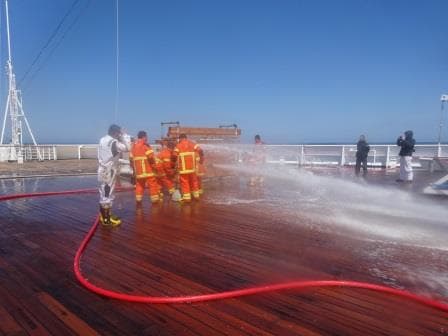
The First Engineer guiding his men. The first hole is always the most difficult as you are still figuring out what to do with the rest.
The wooden wall that I have created does not really simulate a ships steel bulkhead but that is also not the purpose of the drill. The purpose is for the Engineers to think outside the box and come up with a solution to plug the holes with the Damage Control Equipment they have available. In real life each situation will also be different, so you cannot take a book and use chapter 7 to keep the ship from sinking. You have to write your own manual while assessing the situation.
The responsibility for Damage Control lies with the Engineers as they are technically trained and know about steel strengths, pipes, hoses, flanges and all related. This is a situation where the deck department can only be on standby and help when asked and needed. Normally the First Engineer takes the lead, assisted by other engineers but quite often a big role is played by machinists and carpenters who on a daily basis have to be creative to stop little holes in pipes and stop flooding’s without the fluid in the pipe being stopped. So it needs a combined effort of skills, creativity, insight, experience and leadership to figure out what in this particular situation works best.
And so they did. Today the solution was a combination of Domes (we have those on board as part of the Damage Control Equipment), Towels, Pillows and Wood. The ingress of water does not have to be stopped completely; it just has to be reduced to such as extent that the ships pumps can handle it without problems. And so they did; and it worked and thus they did a very good job. I was impressed with the solution as the water came in this time at the edges of the wall and thus it was not easy to get it plugged with the regular equipment.
In the meantime the good ship Maasdam continued its journey upriver and all on the bridge will keep an eye on the weather. This evening we will embark two pilots at the pilot station of Escomins and then tomorrow morning at 07.00 we should be docked at Quebec.
Weather for tomorrow: Summertime. 26oC / 78oF with a gentle breeze in the mid afternoon and for the rest nearly wind still. Time for shorts and flip-flops.
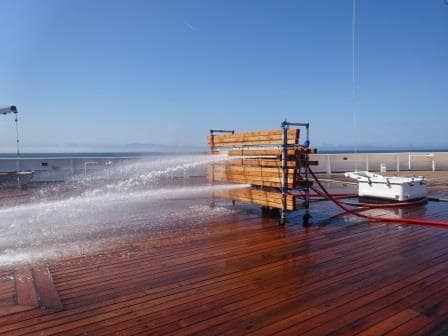
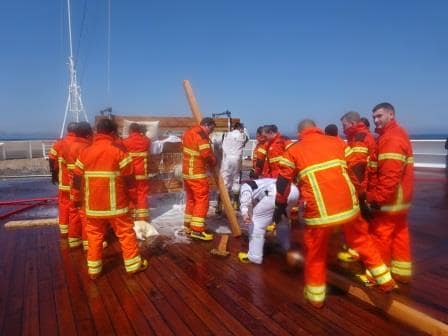
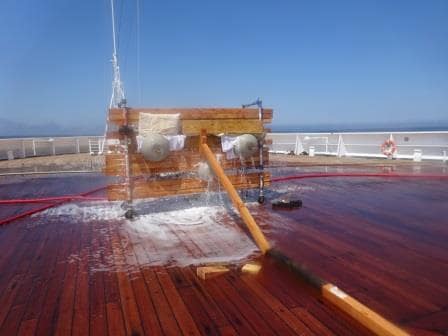
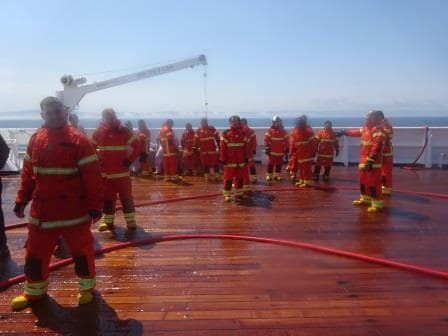

June 8, 2017 at 8:02 pm
Does the evolution time ever allow for a failure of the solution? E.G. A trainer or engineer “helping” the solution fail or once at a trickle the training is done for the day.
I so enjoy reading your side of the cruise business.